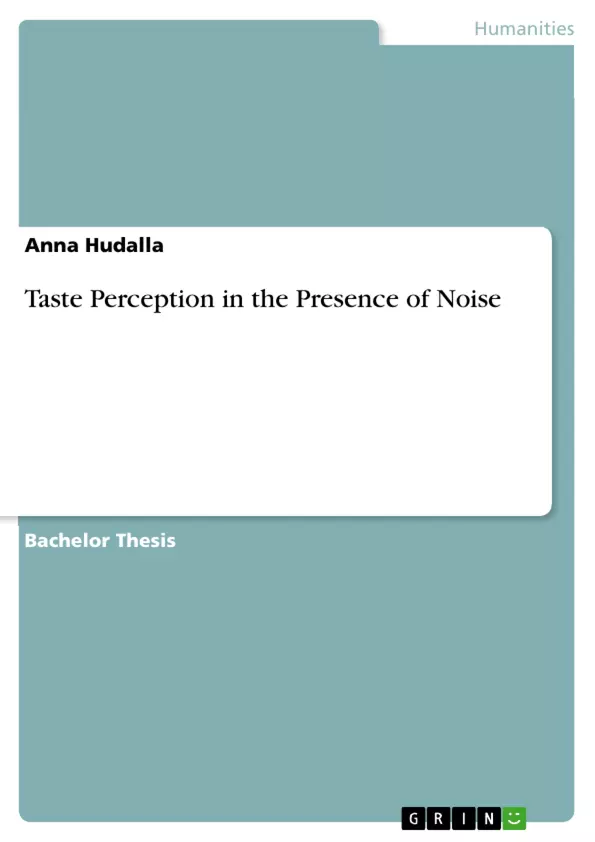Abstract
We investigated the role of background music in the evaluation of gustatory stimuli. It was assumed that loud background noise influences taste perception due to its attentional demanding nature. To test for this hypothesis, we generated high levels of attentional demand by exposing participants to 1) loud noise and 2) an auditory attention tasks. The taste stimuli we used were sugar solutions at different levels of sweetness. Previous research suggested that high attentional demands result in decreased perceived sweetness and a decreased ability to detect sugar. We tested the perceived sweetness and detectability of sugar in the presence of loud background noise, in the presence of an attention task or with both as well as in a baseline condition without noise or attention task. The current study did not find an effect of loud noise or attention task on the perceived sweetness or detectability of sugar.
Table of Contents
- Taste Perception in the Presence of Noise
- The Role of Attention in Food Perception
- Method
- Participants
- Materials
- Procedure
- Results
- Discussion
Objectives and Key Themes
This study investigates the role of attention in taste perception, specifically examining how loud background noise and an auditory attention task affect the perceived sweetness and detectability of sugar solutions.- The effect of loud noise and attentional demands on taste perception.
- The relationship between attention and the perceived intensity of taste.
- Comparison of the study's findings to previous research on background music and taste perception.
- Exploring potential mechanisms behind the influence of attention on taste perception.
- The role of sensory interactions and contrast effects in taste perception.
Chapter Summaries
- Taste Perception in the Presence of Noise: This chapter introduces the study's focus on investigating the effect of sound on food perception, highlighting the significant amount of time we spend eating and the various factors influencing food perception. It also discusses previous research on background music and its effects on food perception, including studies exploring commercial implications and implicit associations between sounds and taste.
- The Role of Attention in Food Perception: This chapter delves deeper into the influence of attention on taste perception. It highlights the study by Woods et al., which found a decrease in perceived sweetness and saltiness under loud noise conditions. This chapter explores four potential explanations for these findings, including sensory interactions, contrast effects, implicit associations, and the critical role of attention. The study aims to investigate the specific role of attention in Woods' findings.
- Method: This chapter outlines the study's methodology, including details about the participants, materials used (sugar solutions at varying concentrations), and the experimental procedures.
- Results: This chapter presents the results of the study, detailing the findings on perceived sweetness and detectability of sugar solutions under different conditions (loud noise, attention task, both, and baseline).
- Discussion: This chapter interprets the study's findings, discussing their implications for understanding the role of attention in taste perception. It also compares the findings to previous research, explores potential limitations, and suggests directions for future research.
Keywords
This study examines the impact of attention on taste perception, specifically focusing on the effects of loud background noise and auditory attention tasks on perceived sweetness and sugar detectability. Key themes include taste perception, attention, detectability, sound, multisensory perception, and background noise.- Citar trabajo
- Anna Hudalla (Autor), 2011, Taste Perception in the Presence of Noise, Múnich, GRIN Verlag, https://www.grin.com/document/264763



